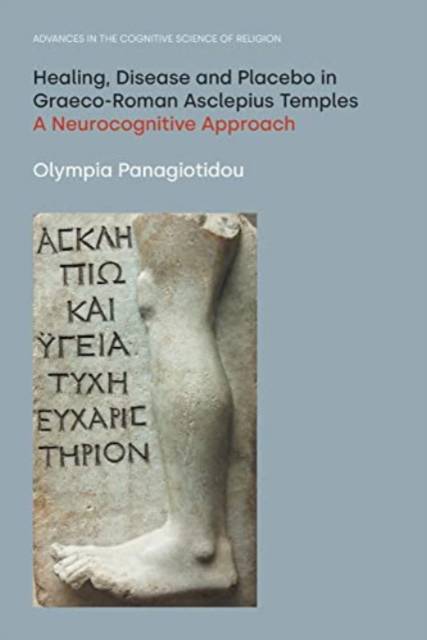
- Afhalen na 1 uur in een winkel met voorraad
- Gratis thuislevering in België vanaf € 30
- Ruim aanbod met 7 miljoen producten
- Afhalen na 1 uur in een winkel met voorraad
- Gratis thuislevering in België vanaf € 30
- Ruim aanbod met 7 miljoen producten
Zoeken
Healing, Disease and Placebo in Graeco-Roman Asclepius Temples
A Neurocognitive Approach
Olympia Panagiotidou
€ 51,95
+ 103 punten
Uitvoering
Omschrijving
This book follows the evidence for Asclepius' supplicants from the moment in which they realized that they were sick until the healing experiences, which they might have had at the asclepieia. From a historical perspective, the main features of the Asclepius cult, as they were shaped mainly in the Hellenistic and Roman periods, are examined. The cult is situated in the wider political, social, cultural, and intellectual contexts of the Graeco-Roman era, in which Asclepius' reputation as a divine physician spread. Social interactions and multiple neurocognitive processes are examined, which would have influenced supplicants' perceptions, choices, and reasoning about health and sickness, and attracted thousands of visitors to the Asclepius temples. The influence of the cult environment on the minds and bodies of supplicants is investigated in order to show how the cult context would have prepared supplicants for the incubation ritual. Modern theories on placebo effects are taken into consideration in order to investigate the possibility of healing at the asclepieia as a result of supplicants' self-healing mechanisms. Finally, the ways in which supplicants might have interpreted their personal experiences during incubation are examined.
Specificaties
Betrokkenen
- Auteur(s):
- Uitgeverij:
Inhoud
- Aantal bladzijden:
- 224
- Taal:
- Engels
- Reeks:
Eigenschappen
- Productcode (EAN):
- 9781800501423
- Verschijningsdatum:
- 15/02/2022
- Uitvoering:
- Paperback
- Formaat:
- Trade paperback (VS)
- Afmetingen:
- 156 mm x 234 mm
- Gewicht:
- 326 g

Alleen bij Standaard Boekhandel
+ 103 punten op je klantenkaart van Standaard Boekhandel
Beoordelingen
We publiceren alleen reviews die voldoen aan de voorwaarden voor reviews. Bekijk onze voorwaarden voor reviews.








